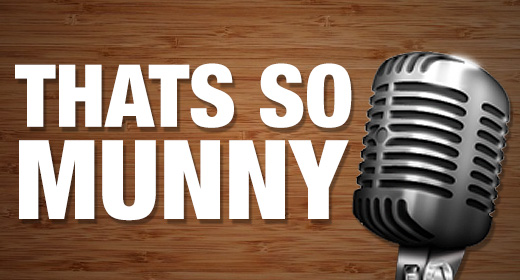By Jeff Munn
In December one of the most bizarre and little discussed parts of Phoenix sports history will officially disappear. The Phoenix Trotting Park will be demolished.
If you have never heard of the Phoenix Trotting Park, get in line. Most of the four and a half million people who live in this metropolis haven’t heard of it either.
On the other hand, if you’ve ever driven west on Interstate 10 towards Los Angeles, you’ve seen it.
In 1964, a man described by Wikipedia as a New York horse racing financier, James Dunnigan, led an investment of $10 million to build a horse racing track dedicated to trotters, where the jockey sits in a two-wheel cart and the horse trots. The sport is popular along the East Coast and parts of the Midwest.
The site of this track was some 30 miles west of what was then Phoenix – a much smaller, more compact area in 1964 than what we know today. In fact, the park, located at Cotton Lane and what is now I-10, is STILL relatively remote, even though Goodyear and Buckeye have crept closer to it in the last generation.
52 years ago today there was a 7 mile backup as folks tried to get to opening night of James Dunnigan’s $ 9 million Phoenix Trotting Park.
— Joe FitzGerald (@Jaf3Joe) January 11, 2017
When it opened in January 1965, there was no I-10. That was due to local politicians who didn’t want the cross-country highway to be completed, leading, in their minds, to Phoenix becoming another Los Angeles. There was not much beyond Cotton Lane at that time, because there was no civilization to speak of there either. If someone tells you they were with the Phoenix Trotting Park from dirt, they’re probably talking about the roads they took to get there.
Despite the difficulties in getting there, opening night drew over 12,000, according to a website dedicated to preserving the memory of Phoenix Trotting Park. The early success could not be sustained, and by the end of 1966, the park closed.
That’s where the real bizarre part of Phoenix Trotting Park begins.
Following its closure, not one racing event has been held there. Occasionally the parking lot served as a home for swap meets (as the former Phoenix Greyhound Park does today), and the site was also used for a scene in the 1998 film “No Code Of Conduct”, which involved a major explosion.
Otherwise, save for the all-too-frequent attacks by vandals, the grandstand has stood silent and alone.
The land on which the grandstand sits is still privately owned (and phoenixtrottingpark.com points out visitors are trespassing), and in fact, at one point, the land was the property of Grand Canyon University. Still, for 50-plus years, the only race at the Phoenix Trotting Park has been to see which weeds would grow the fastest.
The site of the grandstand now is nothing short of sickening. Broken windows, faded paint, and nothing inside. When the track suspended operations in December 1966, the website reports the equipment inside was removed and sent to other tracks.
Could something else had been done with the site? Given the explosive growth in the West Valley, you’d have to think so, but one question remains that may never be answered: why did they build it there?
The best and most plausible explanation could be that the investors were one of the rare cases of someone anticipating growth in Phoenix rather than reacting to it. I-10 was eventually built through Phoenix, and another major freeway, the 303 Loop, exists near the park because the Valley simply could not have dealt with any more gridlock. Most often, the growth forced planners to address the need for more highways, more homes and, yes, more sports venues. It was never build it and they will come.
It sparks thoughts about the Valley’s long-standing tradition, thoroughbred racing at Turf Paradise, and how it has struggled through the years to survive, even as the Valley has grown around it.
The #abandoned remains of the Phoenix Trotting Park. Barely see shape of the old track. #desert #drone #aerial #uas #photography #urbex pic.twitter.com/4V7ZDwhJYg
— Gary Buzel (@ProLensView) May 15, 2017
Greyhound racing is going through the same, slow departure. Phoenix Greyhound Park, a palatial facility in its heyday, sits idle, and if you drive North on I-17 to Black Canyon City, you’ll see a large white structure that used to be Black Canyon Greyhound Park. In Apache Junction, Apache Greyhound Park still operates, but all it does are simulcast races from other tracks for betting purposes. Live racing is gone, probably for good.
When the wrecking ball hits the grandstand of Phoenix Trotting Park in December, a strange, short chapter of Phoenix sports history will come down as well. Who knows what they’ll find in the rubble….besides displaced weeds.
